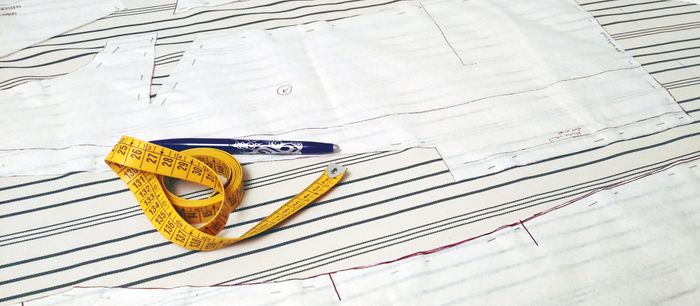Make it Happen Project: Sweet Overlay
Chiffon is a good choice for shirring as well as form-fitting and boned bodices
When air catches chiffon, it moves. Because it’s light, chiffon is a good choice for shirring as well as form-fitting and boned bodices. But chiffon’s lightness makes it hard to sew. It floats away while you’re cutting it and squeezes right out from under the presser foot while you’re sewing it.
Besides its fluid and moldable characteristics, chiffon also holds beautiful color, and its sheerness allows colors to blend through the layers for wonderful effects without making the garment too heavy. The vibrancy of its color is as appropriate for daywear moods as the ballroom glamour that’s often associated with this diaphanous fabric. This sweet blouse created from Simplicity Sew Stylish 2925 combines layers of bright salsa colors. (You could use a similar pattern of your choice.)
Plan your pattern and cut
You’ll want to first pick your colors and then experiment to see how you want to layer them before you design how they’re placed. Find colors that blend with each other but also clash.
Copy the pattern
Trace a copy of your front and back pattern pieces. You’ll need two copies because you cut one apart as you cut your fabrics.
Design the overlays
Draw a series of vertical dotted lines parallel to the center-front foldline. These dotted lines will be the topstitching lines after you’ve cut your fabric.
A rotary cutter with a pinking blade is the best cutting device because you can keep your fabric flat on the table as you cut. Cut two sets of sleeve pieces in contrasting colors and the four various front layers.
The heavy red georgette (1) is the base fabric. Cut it first from the full pattern piece with both the front and back on the fold.
Cut a second back piece 1⁄2 inch longer than the waistline from the tomato red chiffon (4). Then cut the front melon chiffon (2) on the fold as shown below and each subsequent layer for the front as illustrated. As you cut each layer stack the pieces in their color order.
Stack your layers
To simplify fabric shifting when you sew, you can use a temporary spray adhesive to affix the layers as you cut. The adhesive disappears overnight. Compare your stacks to the original pattern shape to make sure everything is still in the right shape before you sew.
Start sewing
Since we have changed the style slightly, the construction varies from the instructions in the pattern guide sheets.
1. Position the two back pieces right sides together. Sew a line 1⁄8 inch away from the center back down 4 inches. Pivot and sew back up to the neckline 1⁄8 inch on the other side of the center line. Cut between the two stitching lines, turn the fabrics to the right side, and press the slit you have created for the back opening.
2. Use a chalk marker to draw the topstitching lines on the front. Topstitch the front lines and across the waist by hand with contrasting perle cotton thread.
3. Layer the sleeve pieces, and lap the front sleeve seam over the back. Topstitch along the exposed edge. Continue to assemble the top, following the pattern guide sheet, but do not sew the back darts.
4. For the hem, cut 11⁄2-inch-wide bias strips to sew along the sleeves and hem edges. Stitch, fold, and press toward the edge.
5. Add a hook at the back neck keyhole opening. We wound little unfinished chiffon knots to embellish the neckline and to cover the hook and eye on the back.












Log in or create an account to post a comment.
Sign up Log in